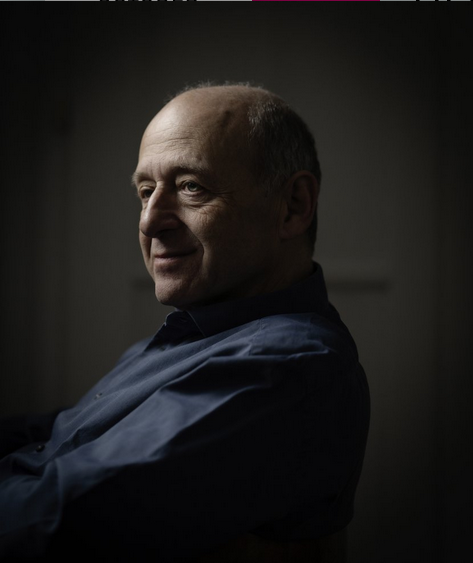Program
Johannes BRAHMS
Hungarian Dance No. 17
VIOLIN CONCERTO IN D MAJOR, OP. 77
.…
Johannes BRAHMS
Hungarian Dance No. 3
SYMPHONY NO. 3 IN F Major, OP. 90
Die Veranstaltung dauert etwa 2 Stunden.
About the program

Iván Fischer
conductor, Music Director
His focus is always the music, and to this end, he has developed several new concert formats and reformed the structure and working method of the symphony orchestra. In the mid-1980s he founded the Budapest Festival Orchestra, where he has since introduced and established numerous innovations. He envisions a pool of musicians serving the community in various combinations and musical styles.
His work as Music Director of the Budapest Festival Orchestra has developed into one of the greatest musical success stories of the last 30 years. With international tours and a series of recordings for Philips Classics and Channel Classics, he has earned a reputation as one of the world’s most celebrated orchestral conductors, for whom tradition and innovation go hand in hand.
He has founded a number of festivals, including the Budapest Mahlerfest, the Bridging Europe festival and the Vicenza Opera Festival. The World Economic Forum presented him with the Crystal Award for his achievements in fostering international cultural relations.
He was principal conductor of the National Symphony Orchestra in Washington, the Opéra National de Lyon and the Konzerthausorchester Berlin, the latter appointing him Conductor Laureate. The Royal Concertgebouw Orchestra named him Honorary Guest Conductor following many decades of working together. He is a frequent guest conductor of the Berlin Philharmonic, the Bavarian Radio Symphony Orchestra and New York Philharmonic Orchestra.
Iván Fischer studied the piano, violin and cello in Budapest, before joining the legendary conducting class of Hans Swarowsky in Vienna. Having spent two years as assistant to Nikolaus Harnoncourt, he then launched his international career as winner of the Rupert Foundation conducting competition in London.
After various guest appearances at international opera houses, he founded the Ivan Fischer Opera Company. His staging always sets as its goal an organic unity between music and theatre. IFOC productions, which often spatially connect the instrumentalists and singers, have been received with great acclaim in recent years in New York, Edinburgh, Abu Dhabi, Berlin, Geneva and Budapest.
Iván Fischer has been active as a composer since 2004, writing mostly vocal music with instrumental ensembles. His opera The Red Heifer made headlines across the world; the children’s opera The Gruffalo enjoyed numerous revivals in Berlin; his most frequently performed work, “Eine Deutsch-Jiddische Kantate” has been performed and recorded in several countries.
Iván Fischer is founder of the Hungarian Mahler Society and patron of the British Kodály Academy. The president of the Republic of Hungary awarded him the Gold Medal, and the French government honored him as Chevalier des Arts et des Lettres. In 2006 he was decorated with the Hungarian Kossuth Prize, in 2011 with the Royal Philharmonic Society Music Award and the Dutch Ovatie Prize, and in 2013 he was named an honorary member of the Royal Academy of Music in London.
Iván Fischer is honorary citizen of Budapest.

Veronika Eberle
violin
Veronika Eberle’s exceptional talent and the poise and maturity of her musicianship have been recognised by many of the world’s finest orchestras, venues and festivals, as well as by some of the most eminent conductors. Sir Simon Rattle’s introduction of Veronika aged just 16 to a packed Salzburg Festpielhaus at the 2006 Salzburg Easter Festival in a performance of the Beethoven concerto with the Berliner Philharmoniker, brought her to international attention.
Key orchestra collaborations since then include the London Symphony, Concertgebouw, New York Philharmonic, Montreal Symphony, Munich Philharmonic and Gewandhaus Orchestras, Rundfunk Sinfonieorchester Berlin, Hessischer Rundfunk Sinfonieorchester, Bamberger Symphoniker, Tonhalle Orchester Zurich, NHK Symphony, Bayerischer Rundfunk Munich and Rotterdam Philharmonic.
Recent concerto highlights include the Klassik am Odeonsplatz with Simon Rattle and the Bayerischer Rundfunk Munich as well as debuts with Philadelphia, San Francisco Symphony and Philharmonia Orchestras and Chamber Orchestra of Europe, Swedish Radio Symphony Orchestra, Luxembourg Philharmonic and Orchestre National de Lille. Veronika also toured Australia making debut performances with the Auckland Philharmonia, Tasmani Symphony and West Australian Symphony Orchestras as well as with the Seoul Philharmonic Orchestra.
In the 22/23 season, highlights include the Swedish Radio Symphony (Harding), Netherlands Chamber Orchestra (Minasi), London Symphony Orchestra (Rattle, Hannigan), Budapest Festival Orchestra (Fischer), Gürzenich-Orchester Köln (Mallwitz), Orchestre National de Lille (Bloch), DSO Berlin (Ticciati) and performances with Chamber Orchestra of Europe in Berlin and Eisenstadt. Chamber music projects include performances at the Gstaad Menuhin Festival with Sol Gabetta and Antoine Tamestit and Schubertiade with Steven Isserlis and Connie Shih amongst others.
Veronika has enjoyed collaborations with conductors such as Sir Simon Rattle, Bernard Haitink, Daniel Harding, Christian Thielemann, Yannick Nézet-Séguin, Kent Nagano, Lorenzo Viotti, Louis Langrée, Robin Ticciati, Paavo Järvi, Alan Gilbert, Ivan Fischer, Heinz Holliger and Sir Roger Norrington.
Born in Donauwörth Southern Germany, she started violin lessons at the age of six and four years later became a junior student at the Richard Strauss Konservatorium in Munich with Olga Voitova. After studying privately with Christoph Poppen for a year, she joined the Hochschule in Munich, where she studied with Ana Chumachenco 2001–2012.
Veronika has benefited from the support of a number of prestigious organisations, including the Nippon Foundation, the Borletti-Buitoni Trust (Fellowship in 2008), the Orpheum Stiftung zur Förderung Junger Solisten (Zurich), the Deutsche Stiftung Musikleben (Hamburg) and the Jürgen-Ponto Stiftung (Frankfurt). She was a BBC Radio 3 New Generation Artist 2011–2013 and was a Dortmund Konzerthaus “Junge Wilde” artist 2010–2012.
Veronika Eberle plays on a violin made by the Italian violin maker Antonio Giacomo Stradivari in 1693, which was made available to her on generous loan by the Reinhold Würth Musikstiftung gGmbH.

